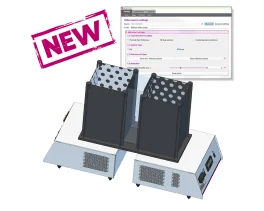L'équipe de Bioseb remercie sincèrement et respectueusement l'équipe du Prof. Poisbeau (Institut des Neurosciences Cellulaires et Intégratives de Strasbourg), qui a utilisé ses instruments lors de ses récents travaux:
Differentiating Thermal Allodynia and Hyperalgesia Using Dynamic Hot and Cold Plate in Rodents, by I. Yalcin, A. Charlet, MJ. Freund-Mercier, M. Barrot and P. Poisbeau, in The Journal of Pain, 2009
(Cliquez ici pour télécharger cette publication au format PDF) Abstract Yalcin, Charlet, Freund-Mercier, Barrot and Poisbeau, using Bioseb's Hot and Cold Plate Test, could show that escape behavior (jumps) was the most appropriate parameter in C57Bl/6J mice, whereas nociceptive response was estimated by using the sum of paw lickings and withdrawals in Sprague-Dawley rats. They could also demonstrate that this procedure allows the detection of both thermal allodynia and hyperalgesia after peripheral pain sensitization with capsaicin in mice and in rats. In a condition of carrageenan-induced paw inflammation, they observed the previously described thermal hyperalgesia, but also revealed that rats exhibit a clear thermal allodynia to a cold or a hot stimulus.
Ces résultats démontrent l'intérêt de la plaque Froid et Chaud de Bioseb pour l'étude de la nociception thermique, et plus particulièrement pour étudier à la fois l'allodynie et l'hyperalgésie thermique par un paradigme unique chez le rongeur éveillé et libre de ses mouvements. Cliquez ici pour plus d'information sur la Plaque Froid et Chaud
